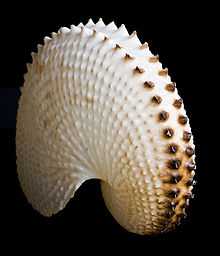Jeanne Villepreux-Power

Jeanne Villepreux-Power (24 September 1794 – 25 January 1871) was a pioneering female French marine biologist who in 1832 was the first person to create aquaria for experimenting with aquatic organisms.
The English biologist Professor Richard Owen referred to her as the "Mother of Aquariophily."[1]
She was born in Juillac, Corrèze,[2] the eldest child of a shoemaker,[3] and travelled to Paris to become a dressmaker, where she became well known for creating a princess' wedding suit. She met and married the noble Englishman James Power in 1818 and the couple moved to Sicily.
In Sicily she began to study natural history, in particular she made physical observations and experiments on marine and terrestrial animals, pioneering the use of the aquarium. Her Guida per la Sicilia has been republished by the Historical Society of Messina.[2] She also studied molluscs and their fossils, in particular she favoured Argonauta argo. At the time, there was uncertainty over whether the Argonaut species produced its own shell, or acquired that of a different organism (similar to hermit crabs). Villepreux-Power's work showed that they do indeed produce their own shells.
She was the first woman member of the Catania Accademia, and a correspondent member of the London Zoological Society and sixteen other learned societies.
Many of her records and scientific drawings were lost in a shipwreck.[2]
In 1997 her name, "Villepreux-Power," was given to a crater on Venus discovered by the Magellan probe.[4]
Popular culture
A biographical song about Jeanne Villepreux is featured on "26 Scientists Volume Two: Newton to Zeno". A 2008 album by the California band Artichoke.[5]
References
- ↑ "Women's History Month: Jeanne Villepreux-Power". 13.7 Billion Years. 14 March 2012.
- ↑ 2.0 2.1 2.2 Arnal, Claude. "Jeanne Villepreux-Power: A Pioneering Experimental Malacologist". The Malacological Society of London Bulletin. Retrieved 19 January 2014.
- ↑ "Jeanne Villepreux-Power". Epigenesys. Retrieved 19 January 2014.
- ↑ 4000 years of women in science
- ↑ About the album "26 Scientists Volume 2: Newton to Zeno"
|
| ||||||||||||||||||||||||||||||||||||||